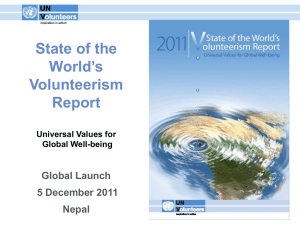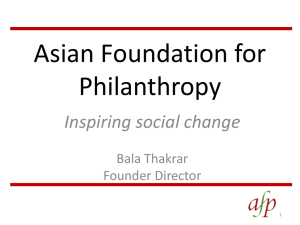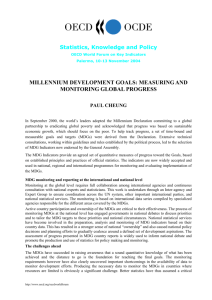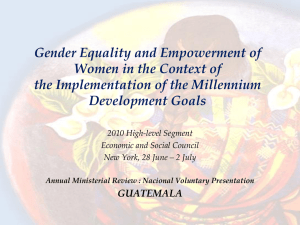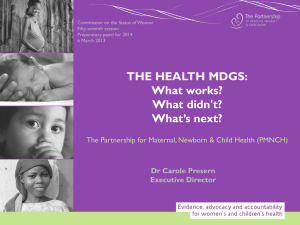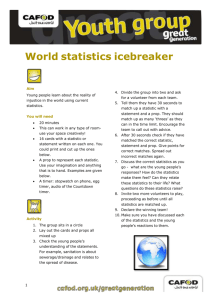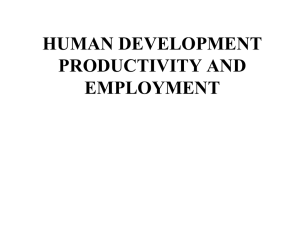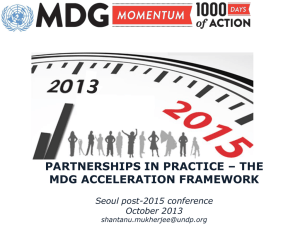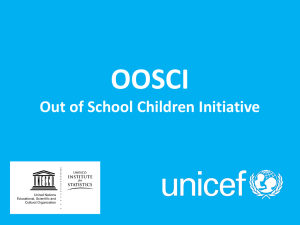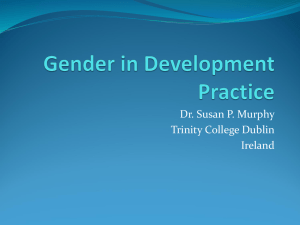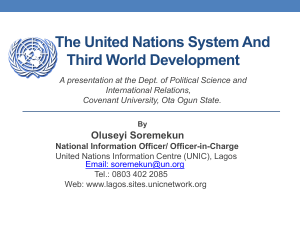Accelerating MDGs - Carnegie Endowment for International Peace
advertisement
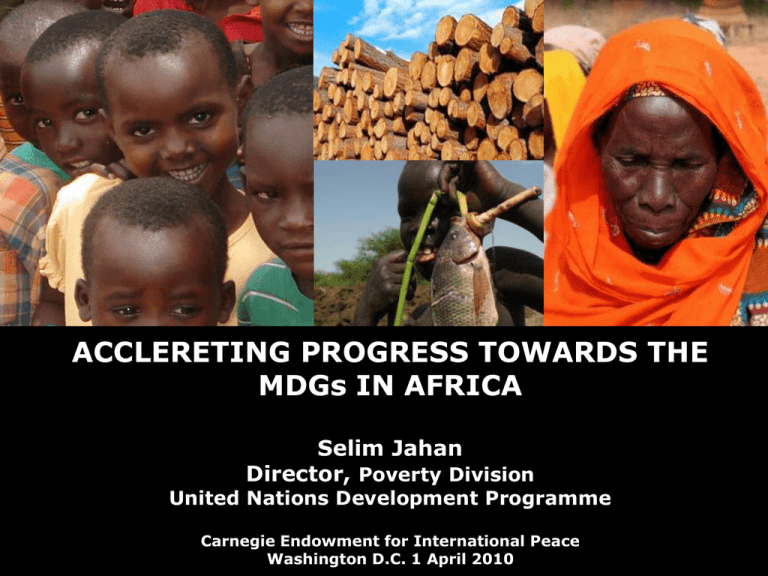
ACCLERETING PROGRESS TOWARDS THE MDGs IN AFRICA Selim Jahan Director, Poverty Division United Nations Development Programme 1 Carnegie Endowment for International Peace © United Nations Development Washington D.C. 1 April 2010 Programme CONTENTS Part 1: Trends in MDG progress – Africa Part 2: Lessons learned from the MDG trends Part 4: Successful proven interventions Part 3: Key challenges and bottlenecks Part 5: Strategic role of the UN MDG TRENDS IN SUB-SAHARAN AFRICA Extreme poverty declined from 57 to 51 percent Net primary enrolment rose from 58 to 74 percent Child mortality fell from 183 to 145 per 1,000 live-births Proportion of working poor rose from 58 to 64 percent More than three-fourths in vulnerable employment Proportion of undernourished people up by 1 percent Half of 72 million out-of-school children in SSA Maternal mortality more than 800 per 100,000 live-birth Two-thirds of HIV/AIDS infection in Sub-Saharan Africa MDG TRENDS IN AFRICA - DISAGGREGATION While between 1990-2005, child mortality in West Africa fell from 225 to180, it increased from less than 200 to 220 per 1,000 people in Central Africa Incidence of HIV/AIDS in East Africa 3 per cent compared to nearly 15 per cent in Southern Africa TB incidence rate per 100,000 people rose from about 200 to 550 in Southern Africa, while the comparable figures for North Africa are unchanged at 100 The antiretroviral therapy coverage in Central Africa 20 per cent, in Southern Africa 30 per cent Between 2000-2006, cellular subscription rose from 7 to 38 per cent in Southern Africa and from 1 to about 14 per cent in Central Africa MDG TRENDS – LESSONS LEARNED Impressive MDG progress possible on several fronts Progress uneven across regions and sub-regions, within countries and among socio-economic groups MDG progress reversed in many countries and decelerated in others because of multiple crises Vulnerability of countries and people increased with pockets of deprivations MDGs are still achievable SUCCESSFUL PROVEN INTERVENTIONS A Comprehensive Package Approach (CPA) for education - Ethiopia, Mozambique and Tanzania Midday school meal programme – Ghana, Guyana, India Community Integrated Management of Childhood Illness (CIMCI) – Eritrea and Malawi Incentive Package for Girls’ education (female teachers/scholarship/uniforms/separate toilets) – Bangladesh, Gambia, Nepal Microfinance for HIV/AIDS – South Africa KEY CHALLENGES AND BOTTLENECKS MDG shortfalls, disparities and time constraint – scalability and replication of proven interventions Structural constraints - lack of sustained economic growth and human development, trade Shocks and vulnerabilities – multiple crises, natural disasters, HIV/AIDS, climate change Three critical gaps – policy and priority gap, capacity and institution gap and resource gap Uncertainty and unpredictability – external assistance, development finance STRATEGIC ROLE OF THE UN MDG acceleration – MDG Acceleration Framework (MAF) : diagnostic, scaling-up proven interventions, local-level initiative, protecting public expenditures Support for overcoming structural constraints – national : economic growth, human development, international : trade, innovation, technology Addressing gaps – alignment, capacity, institutions Support to resources gaps – Gleneagles scenario, ODA commitment, MDG carbon facility Implementing the MDG Africa Steering and Working Group recommendations, formulating regional approaches THANK YOU UNITED NATIONS DEVELOPMENT PROGRAMME
